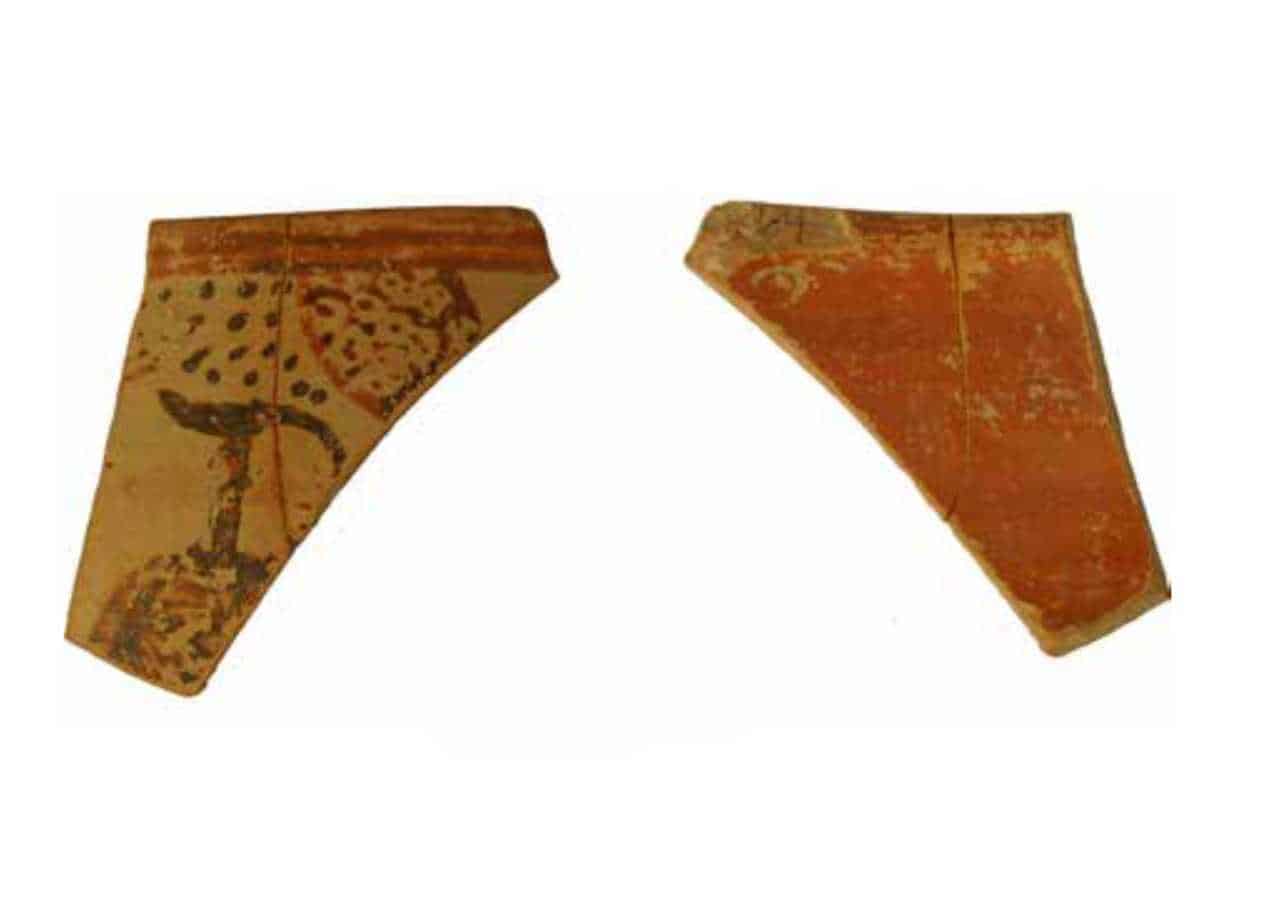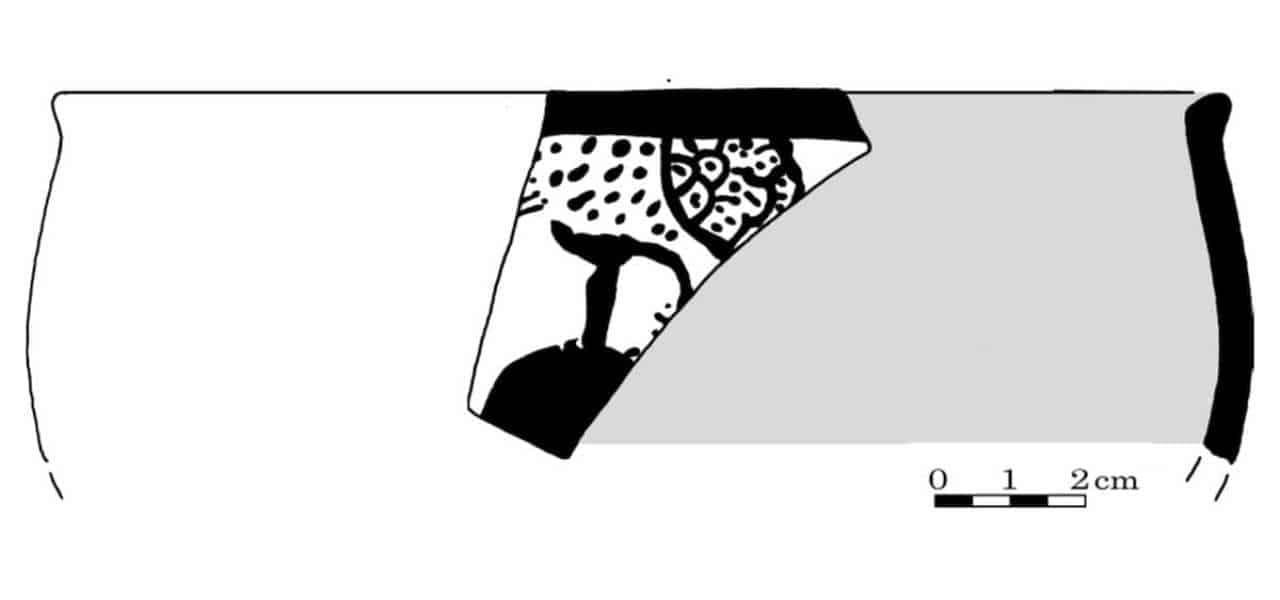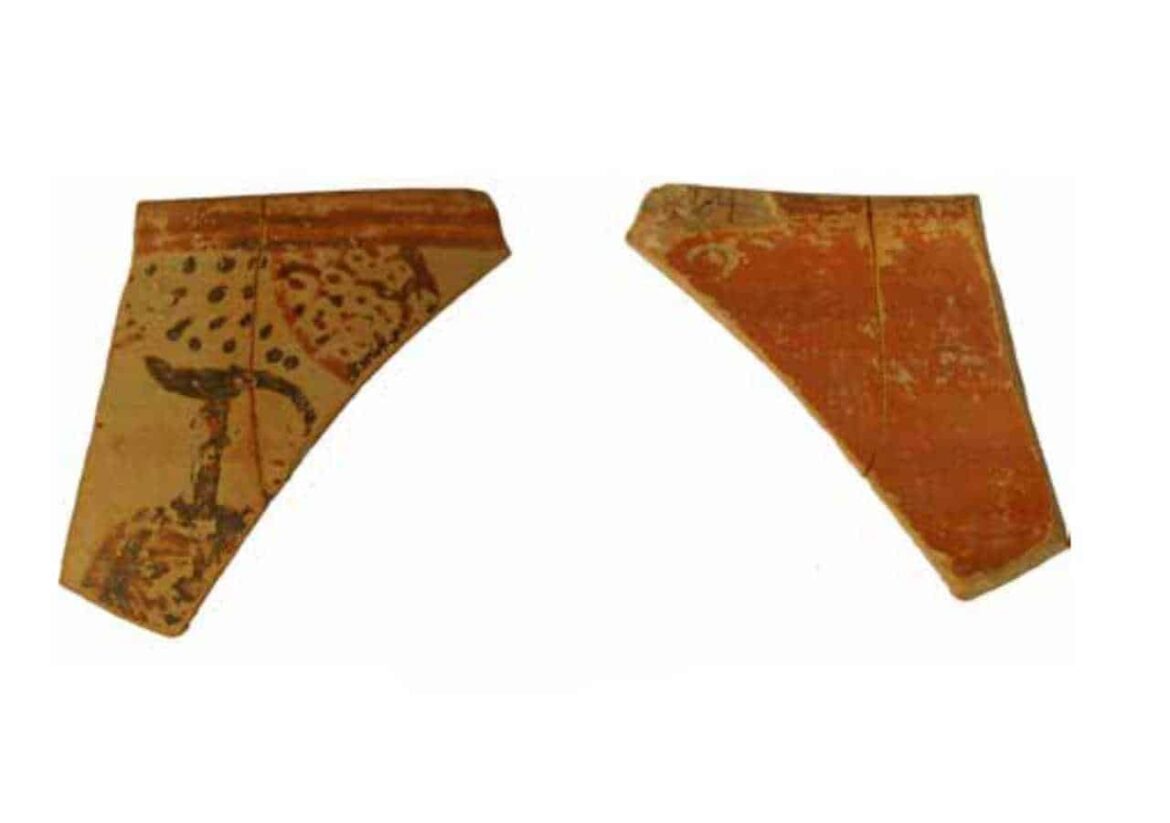
Pictorial kylix fragment from Kontopigado. Credit: E. Kardamaki / CC BY 4.0
A small fragment of Bronze Age pottery unearthed at a Mycenaean settlement south of the Acropolis of Athens is now offering scholars further insight into the development of Ancient Greek art.
The fragment, recovered from the site of Kontopigado in southern Athens, is part of a painted drinking cup from the 14th century BC. Though only a sliver of the vessel remains, the quality and style of the decoration make it one of the more striking finds from the region.
A rare example of pictorial Bronze Age Greek pottery in the Athens area
The study, published in Opuscula by archaeologist Eleftheria Kardamaki of Heidelberg University, focuses on a shard that represents approximately eight percent of a kylix (Greek: κύλιξ).
This stemmed cup was a common drinking vessel during the Late Mycenaean period and an early ancestor of the wine cups that later defined Greek symposia. The fragment was discovered during long-term excavations carried out between 1986 and 2000 in a structure known as Complex II.
This is an ancient Greek wine cup called a kylix, designed for sipping wine throughout the night.
As wine was consumed, a painted image was revealed—scenes warning of the dangers of drinking too much, mythological moments, singers and musicians, or even things more X-rated. pic.twitter.com/RfDlw12lS2
— Getty (@GettyMuseum) January 17, 2023
Archaeologists uncovered the piece in a layer of reddish soil that had settled over the floors of a room, suggesting the fragment had shifted slightly but still lay close to its original place. Although only slightly larger than a coin, the shard stands out for its figurative decoration—a rare feature in Attic pottery of this period.
A detailed jug and unusual motifs on Bronze Age Greek vessel
The clearest element on the fragment is the depiction of a long-spouted jug, painted with confident, neatly executed lines. This type of jug appears widely across the Aegean and is a familiar form in Minoan and Mycenaean material culture. Portions of additional motifs also remain.
Above and around the jug are small arches, dots, and short lines arranged in patterns that do not correspond to typical decorative conventions of the period.

Ritual scene on the kylix fragment. Credit: E. Kardamaki / CC BY 4.0
Because so little of the original scene survives, researchers hesitate to assign any specific meaning to the imagery. Even so, the combination of the jug and the unusual painted clusters suggests the vessel carried a more complex design than most local pottery from Attica.
A window into early Athens and its craftsmen
Kontopigado’s role in the 14th century BC offers context for the shard’s presence. The settlement served as a major industrial center with a productive pottery workshop whose ceramics circulated across Attica and to nearby islands such as Salamis. Its close ties to the palace on the Acropolis placed it within the administrative reach of Mycenaean Athens, one of the earliest identifiable Greek political systems.
The fact that such a decorated vessel was produced in this area suggests that artisans near early Athens were actively engaged with broader Aegean artistic trends, typically associated with major palatial centers such as Mycenae and Tiryns.
A small object that preserves a wider Greek tradition
Although damaged and incomplete, the fragment offers valuable evidence of the kinds of painted imagery that existed in Late Bronze Age Greece. It confirms that even outside the most prominent palace centers, workshops in the shadow of the Acropolis produced vessels that reflected the evolving visual language of Mycenaean culture.
The tiny ceramic piece adds an important detail to the story of early Greek craftsmanship and helps place Athens more securely within the broader artistic networks of the Aegean world.


Dining and Cooking